



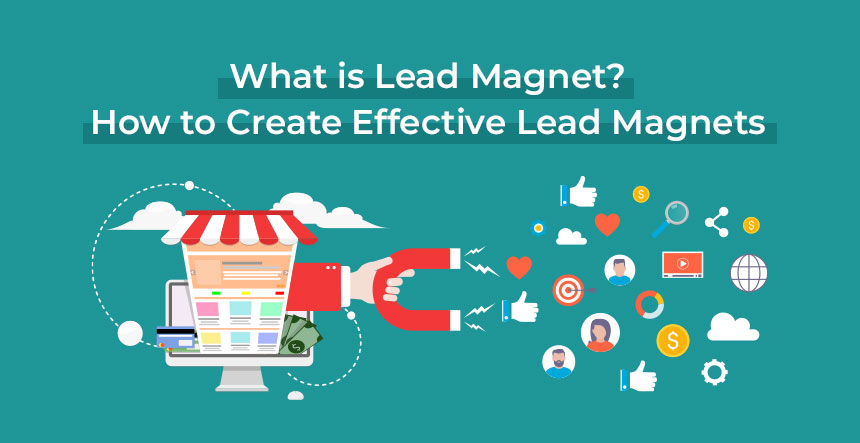
A magnet is known for its capability to attract the ferrous elements. In marketing, ‘Lead Magnet’ is a term that is used in order to describe the technique of gaining the contact information of the prospects. The eBooks/whitepapers/templates/podcasts and other types of downloadable content can be used as lead magnets. It is also possible to create lead magnets by re-purposing the existing content.
Lead magnet is a marketing tool. It offers long-form content in exchange of a prospect’s contact information in order to generate more leads. They are available in different types of downloadable assets and the exchange of contact information generally takes place at the second phase of the conversion path.
One of the primary objectives of digital marketing is to build credibility and to drive more awareness. Lead magnets can be used by the marketers to measure the success of their efforts.
Using lead magnets, businesses can collect the e-mail addresses of prospective customers in exchange of something useful or valuable.
They are also useful in collecting additional information from the prospects if they can be influenced to fill in a form.
If you have a merchant website, then you need to generate leads online and lead magnets are essential for generating online leads. For example,
It is useful to send e-mails to the interested customers in order to generate leads that will turn into buyers in the future. However, a prospect may not want to share their e-mail addresses without an incentive or an influencing factor, as it is personal. In this scenario, you may use lead magnets in order to pursue the leads to share their e-mail address.
A marketer may use a blogpost to influence the prospects to share their e-mail addresses. For example,
At the end of a blogpost, readers may be asked to join your e-mail list for ‘updates’ on a particular issue or various issues relevant to your business.
or
You may ask the readers to join the e-mail list in order to receive a free downloadable PDF ‘case study’ which provides real-life examples of the success of a particular strategy.
Marketers believe that a business will receive most e-mail sign ups through the second strategy.
You may appoint a marketer to create ‘lead magnets’, however, may not notice any increase in the number of leads. Why? It happens if a marketer does not put effort or thoughts into creating Lead Magnets and a marketer can create effective Lead Magnets using the following steps.
The primary objective of creating the ‘lead magnets’ is to attract as many prospects as possible. However, it is crucial for a marketer to use lead magnets capable of influencing the target customers of a business.
Hence, the primary step of creating lead magnets is to identify the buyers’ persona. A marketer needs to be extremely specific regarding the type of people a business wants to influence.
If a marketer can identify the buyers’ persona, then it is possible to create lead magnets relevant to the requirements and desires of the target customers. They are more than likely to download a particular type of content due to this reason. Hence, it is important to understand the ‘buyer persona’ before creating any lead magnets.
It is also possible for a business to have multiple buyer personas. In this scenario, it is essential to create separate Lead Magnets targeting different types of buyer personas.
If a marketer can identify the targeted prospects, then it becomes possible to pursue them to download a lead magnet. The number of leads that can be generated by a Lead Magnet is directly influenced by the promise a business makes to the prospective leads. The value proposition is supposed to propose the following factors.
Hence, the ‘best value proposition’ is something that your buyer persona requires, and they need less convincing to download a particular type of content in exchange of the information. It is important to find out what target customers want due to this reason. For example,
When creating a marketing e-mail or blogpost, it is essential to use a catchy headline to increase the conversion rate. Similar to this, it is important to add an impressive title to the lead magnet. It is a headline for your value proposition that is appealing to the buyer persona and you may notice a significant difference in the conversion rate due to this addition.
Have you been able to determine the correct type of Lead Magnet to offer to the buyer persona? Do you have several options to choose from when creating a lead magnet? Do these options deliver the value proposition? The following tips can help you make the right decision.
There are limitless options; although, most lead-magnets can be categorized as –
Once you have a strategy, it is time to create Lead Magnets. It is important to keep two things in mind at this step –
Sometimes, it is difficult to find an original content that is relevant to your industry if it is a well-established industry. It is possible that other businesses have covered all aspects of the same subject. In this scenario, it is difficult to provide any additional information on the same subject.
It is prudent to produce an ‘Ultimate Guide’ in this scenario which is a comprehensive collection of the most relevant and useful articles on a specific subject. In an Ultimate Guide, you will be mentioning links to other websites. It is important not to use someone else’s content in the guide.
For Example: Brian Dean from Backlinko.com produced Link Building: The Definitive Guide

Do you have a collection of blogposts on a particular subject? In this scenario, a mini e-Book may be the perfect choice for a lead magnet.
For example, you may have the following articles on e-marketing.
You may compile these blogposts into an e-book using a catchy title.
The successful lead magnets provide an instant reward to the visitors and this is offered by the e-books. When you put multiple relevant blogs at one place (e-book), then it becomes convenient for the visitors to find the useful information which is a gratifying feeling.
Example: At KrishaWeb, we have prepared many design, web development and marketing related eBooks and it is open for techies to download free. E.g. – Download WordPress Intermediate Guide
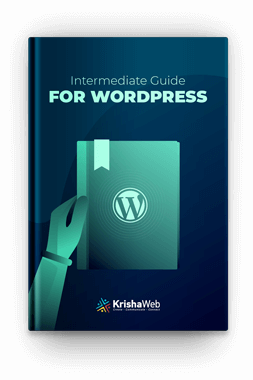
It is a collection of items that is supposed to help the visitors in achieving results. You may use it as a lead magnet if you have a strategic blogpost. For example, you may offer a free downloadable text-content to the readers featuring multiple tools. It may become a perfect resource for a reader and they may refer to the content whenever they want. Alongside being a list of useful items, a web application can be used as ‘Resource Guide’.
Example: Brian Dean used “SEO Tools: The Complete List” He offered a free download that detailed the 153 tools featured in his post — the perfect resource for a reader to keep and refer to whenever they need.
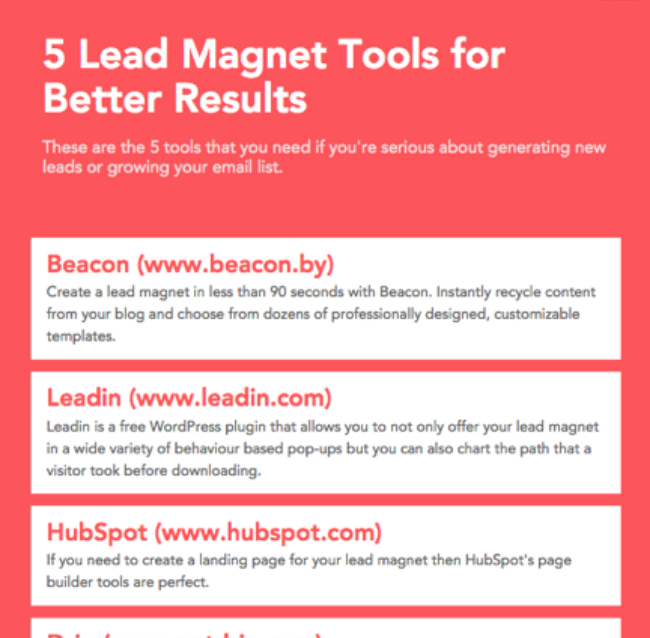
Will it not be useful if the majority of the visitors to your website shared their e-mail addresses? You may achieve this result if an additional piece of content is offered through the original blogpost.
For example, you may offer an exclusive PDF file through a blogpost that is supposed to contain additional or updated information regarding a particular issue.
This type of reward may encourage the readers to opt-in. This is the main objective of using lead magnets.
You may turn an instructional blogpost into a Checklist. You may easily create it using a series of bullets. You can bring the main points of a blogpost into focus in this manner.
It is more useful if you offer the Checklist in a printable format. It enables the visitors to tick-off each item on the list. It provides a sense of achievement to the participants and brings leads to your business.
For Example: At KrishaWeb, we have one Ecommerce Conversion Rate Optimization Page and at bottom of it we have provided Ecommerce SEO Checklist as a Lead Magnet to download with the exchange of some contact details.

A Workbook format can be used to collect useful information from the people. It is made of a cover-page, a brief introduction and a series of exercises for the readers. Using this lead magnet, you can encourage the readers to apply the principles of a blogpost into their own businesses.
For Example: Neil Patel offers this highly practical Workbook for writing blog posts that rank in Google. It includes exercises like planning your blog post structure and experimenting with different introductions.
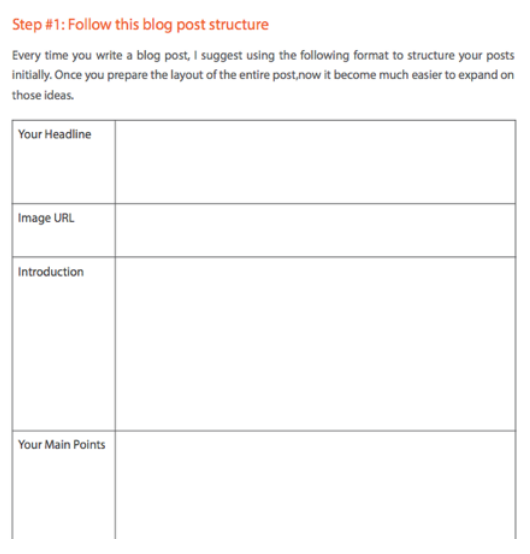
Case studies are real-life examples and can be used as a lead magnet. It can be used to show how a particular product is being used by a customer or how a particular service is benefiting a consumer. You may make this case-study available to the prospects once they fill in a form with their names and e-mail addresses. Thus, you can have the e-mail address of the prospects.
It is a time-consuming and energy-draining task to create content-rich webinars. However, webinars can be used to generate high-quality leads due to the following reasons.
Heck, webinars work so well for lead generation that Neil Patel turned his entire homepage into a webinar registration page!
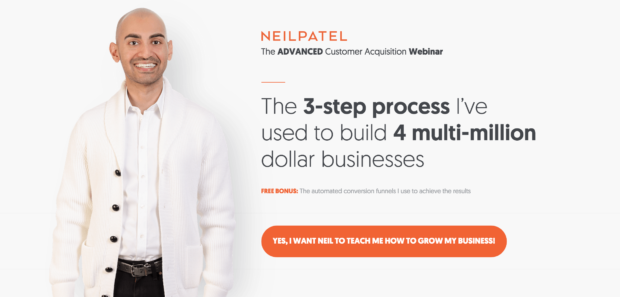
It can be used as a Lead Magnet if your blog post covers a complicated subject or if it is a lengthy post. It may contain a glossary of terms or may be a summary of vital points on a particular subject and the readers may refer to this one-page sheet in order to jog their memory.
Here’s an example of a cheat sheet created for bloggers: 52 Headline Hacks: A Cheat Sheet for Writing Blog Posts That Go Viral.
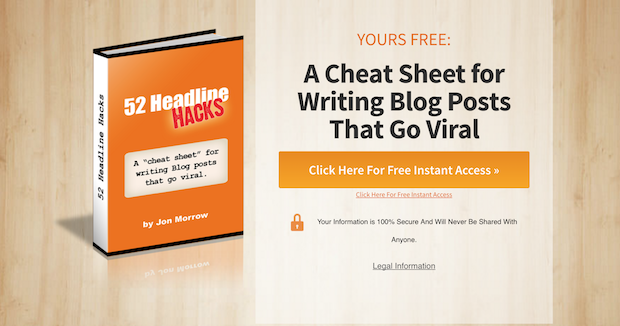
It is also possible to collect the e-mail addresses of the visitors to your website using an appealing Call-to-Action text. You may poke the curiosity of the readers using a CTA. For example, you may ask them to share their e-mail address in order to learn in detail about a subject that will be appealing to them. Thus, you can use the CTA as the lead magnet.
Lead Magnets are used to attract the leads. However, it is essential to determine the ‘buyer persona’ in order to find effective and suitable lead magnets for a business. These tips with examples may help you find the Lead Magnets for your business.
Subscribe to our newsletter and learn about the latest digital trends.